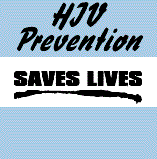
|

Status of Perinatal HIV Prevention:
U.S. Declines Continue
|
During the early 1990s, before perinatal preventive treatments were available, an
estimated 1,000-2,000 infants were born with HIV infection each year in the United
States. Today, the United States has seen dramatic reductions in mother-to-child, or
perinatal, HIV transmission rates. These declines reflect the widespread success of
Public Health Service (PHS) recommendations made in 1994 and 1995 for routinely
counseling and voluntarily testing pregnant women for HIV, and for offering
zidovudine (AZT) to infected women during pregnancy
and delivery, and for the infant after birth.
Perinatal Prevention Saves Lives and Dollars
 On a national level, HIV/AIDS surveillance and other
studies continue to demonstrate that perinatal HIV
prevention is making a difference, both in terms of lives
and resources saved:
On a national level, HIV/AIDS surveillance and other
studies continue to demonstrate that perinatal HIV
prevention is making a difference, both in terms of lives
and resources saved:
- Between 1992 and 1997, perinatally acquired AIDS
cases declined 66% in the United States.
- A study conducted in four states (Michigan, New Jersey, Louisiana, and South
Carolina) found that the proportion of pregnant women voluntarily tested for HIV
increased from 68% in 1993 to 79% in 1996. The percentage of women offered
AZT increased from 27% in 1993 to 85% in 1996. However, the study also
found that 15% of HIV-infected pregnant women in these states did not receive
prenatal care and therefore could not be offered this intervention.
- Among women in CDC’s Perinatal AIDS Collaborative Transmission Study
(PACTS), AZT use increased following the publication of PHS guidelines,
and the rate of perinatal transmission dropped from 21% to 11%. The PACTS
study includes women from four cities -New York City, Newark, Atlanta,
and Baltimore.
- Prenatal care that includes HIV counseling and testing and AZT treatment for
infected mothers and their children saves lives and resources. Without intervention, a 25% mother-to-infant transmission rate would result in the birth of an
estimated 1,750 HIV-infected infants annually in the United States, with lifetime
medical costs of $282 million.
- The estimated annual cost of perinatal prevention in the United States is $67.6
million. This investment prevents 656 HIV infections and saves $105.6 million in
medical care costs alone - a net cost-savings of $38.1 million annually.
HIV transmission from mother to child during pregnancy, labor, and delivery or by
breast-feeding has accounted for 91% of all AIDS cases reported among U.S.
children. The best ways to prevent infection in children are to prevent infection in
women and to encourage early prenatal care that includes HIV counseling and
testing.
Perinatal HIV Transmission Heavily Affects Communities of Color
Women of color and their children have always been disproportionately affected by the HIV epidemic. In 1998,
of the 10,998 totalAIDS cases reported among U.S. women, 8,830 (80%) were amongAfricanAmerican and
Hispanic women. Of the 382 children reported withAIDS in 1998, 321 (84%) were African American and
Hispanic (see chart below). We must continue to improve HIV prevention efforts for women of color and
ensure that interventions provide the information, skills, and support needed to reduce their HIV-related risks.
What Else Is Needed?
- Perinatal HIV prevention activities must help ensure
that all HIV-infected women are reached early in
pregnancy with prenatal care and with the opportunity to learn their HIV status. If infected, they should
be offered preventive therapy to improve the
chances that their children will be born free of
 infection and to ensure quality HIV care and treatment for mothersand their babies. Achievingthis
goal will require increased access to and use of
prenatal care.
infection and to ensure quality HIV care and treatment for mothersand their babies. Achievingthis
goal will require increased access to and use of
prenatal care.
- Women who use drugs during pregnancy are the least likely to get prenatal care. Increased efforts
are needed at all levels (community, state, national) to integrate substance abuse and HIV prevention
activities and assist pregnant women in accessing needed services to improve their own health and the health
of their babies.
For information about national HIV prevention activities, see the following CDC fact sheets:
For more information...
CDC National AIDS Hotline:
1-800-342-AIDS
Spanish: 1-800-344-SIDA
Deaf: 1-800-243-7889
CDC National Prevention Information Network:
P.O. Box 6003
Rockville, Maryland 20849-6003
1-800-458-5231
Internet Resources:
NCHSTP: http://www.cdc.gov/nchstp/od/nchstp.html
DHAP: http://www.cdc.gov/hiv
NPIN: http://www.cdcnpin.org
Last Updated: November 1999
Centers for Disease Control & Prevention
National Center for HIV, STD, and TB Prevention
Divisions of HIV/AIDS Prevention
Contact Us
|


 On a national level, HIV/AIDS surveillance and other
studies continue to demonstrate that perinatal HIV
prevention is making a difference, both in terms of lives
and resources saved:
On a national level, HIV/AIDS surveillance and other
studies continue to demonstrate that perinatal HIV
prevention is making a difference, both in terms of lives
and resources saved:
 infection and to ensure quality HIV care and treatment for mothersand their babies. Achievingthis
goal will require increased access to and use of
prenatal care.
infection and to ensure quality HIV care and treatment for mothersand their babies. Achievingthis
goal will require increased access to and use of
prenatal care.